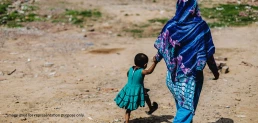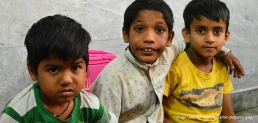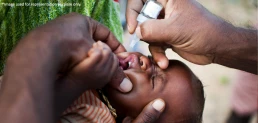While the neonatal mortality rate (NMR) has dropped from 52 to 28 per 1,000 live births since 1990, progress has been slow.
Poor maternal care, infections, lack of timely intervention, and weak health infrastructure continue to threaten newborn lives. Rural-urban gaps and economic inequality worsen the situation. The first 28 days of life remain the most dangerous.
This blog will delve into what NMR is, the reasons behind its stubborn numbers, and practical ways to reduce them.
Also Read: Anemia in Children
What Is Neonatal Mortality?
Neonatal mortality implies the death of a baby within the first 28 days of life. These deaths usually happen due to issues like infections, birth injuries, premature delivery, or a lack of proper medical care.
Also Read: Role of Nutrition
Definition and Global Perspective
The neonatal mortality rate (NMR) refers to the number of newborn deaths within the first 28 days of life per 1,000 live births. Globally, an estimated 2.3 million babies die during this period each year.
Most of these deaths happen in low and lower-middle-income countries.
High NMR points to poor access to healthcare, low institutional deliveries, and delayed care. Countries focusing on early antenatal checkups, skilled birth attendance, and essential newborn care tend to show lower NMR levels.
Difference Between Neonatal and Infant Mortality
Neonatal mortality refers to deaths within the first 28 days of life. Infant mortality includes both neonatal and post-neonatal deaths, covering the period from birth to one year. While both rates show the overall condition of child health, most infant deaths in India occur during the neonatal phase.
Here are some key differences between the two:
| Aspect | Neonatal Mortality | Infant Mortality |
| Age Group | Birth to 28 days | Birth to 1 year |
| Main Causes | Birth complications, infections | Neonatal causes + malnutrition, diseases |
| Indicator Used | Neonatal Mortality Rate (NMR) | Infant Mortality Rate (IMR) |
| Focus Area | Newborn health | Overall infant care |
The Neonatal Mortality Rate in India: A Closer Look
The neonatal mortality rate (NMR) currently stands at 20 per 1,000 live births. This figure accounts for over 50% of total under-five deaths.
Targeted health programs have helped reduce numbers, but progress still needs major acceleration across several regions and social groups.
Current Statistics and Trends
- NMR in India is 20 per 1,000 live births (Sample Registration System, 2020).
- Over 70% of infant deaths occur during the neonatal period.
- The first week of life accounts for nearly 75% of neonatal deaths.
- Preterm birth complications, infections, and birth asphyxia are the leading causes of neonatal mortality.
- Girls face higher mortality due to gender-based disparities in care.
Major Causes of Neonatal Mortality in India
Most neonatal deaths in India occur within the first 24 hours of birth. Some major reasons behind this are:
Premature Birth and Low Birth Weight
Over 3.5 million babies in India are born preterm each year. Nearly half of neonatal deaths are linked to low birth weight and early delivery. These babies often need extended support after birth, including temperature regulation, feeding assistance, and infection control.
Many are discharged from Special Newborn Care Units while still vulnerable. Without consistent postnatal care and monitoring, risks of stunting, cognitive delays, or early death remain high. Strengthening maternal nutrition and antenatal care can reduce these risks significantly.
Infections and Birth Complications
Neonatal sepsis, pneumonia, and birth asphyxia contribute to a large number of newborn deaths. Poor hygiene during delivery, delayed breastfeeding, and lack of antibiotics increase infection risk. Additionally, inadequate handling of birth complications like obstructed labor can result in brain damage or death.
Lack of Access to Quality Healthcare
Many newborn deaths stem from gaps in quality rather than a lack of access. Although institutional births have increased, many facilities lack trained staff and functioning equipment. In rural and tribal areas, care remains particularly patchy.
For example, only 42.6% of newborns receive early breastfeeding, along with this, stillbirths and preventable deaths from asphyxia point to poor delivery standards.
Social Determinants and Maternal Health
Maternal health, poverty, and social inequity directly impact newborn survival. Women from tribal or poor communities often give birth at home without skilled help. These births carry higher risks of complications and death. Girls face more neglect, reflected in higher under-five mortality among females.
Early marriage, poor nutrition, and limited mobility worsen outcomes for mothers and babies.
Also Read: Prioritizing Health and Nutrition for At-Risk Children in India
Why Every Life Matters: The Human Cost of Neonatal Deaths
Neonatal deaths often go unreported or unnoticed, yet each loss reflects a failure in basic healthcare access. These deaths affect mothers mentally, strain families financially, and signal deeper public health gaps.
However, a lot of these deaths are preventable through timely care, clean deliveries, and maternal support. When society invests in neonatal care, it prevents lifelong trauma, builds healthier communities, and affirms that every child, regardless of where they’re born, deserves a fighting chance to live.
Strategies to Reduce Neonatal Mortality in India
India’s neonatal mortality rate remains high due to factors like low birth weight, birth asphyxia, and infections. The government aims to address this by enhancing perinatal care and improving maternal health.
Similarly, increasing access to proper facilities and encouraging skilled birth attendance are essential steps for reducing neonatal deaths in both rural and urban areas.
Some other measures include:
- Training traditional birth attendants.
- Providing nutritional supplements for pregnant women.
- Ensuring adequate rest and healthcare during pregnancy.
- Establishing a reliable referral system for high-risk pregnancies.
- Raising awareness through mass communication about neonatal care.
How Can CRY America Help Combat Neonatal Mortality in India?
CRY America can be crucial in addressing neonatal mortality in India by strengthening healthcare systems in rural and underserved areas. Through its partnerships, CRY America helps improve maternal health services, ensuring expectant mothers access proper prenatal and postnatal care.
By focusing on improving immunization coverage, promoting safe childbirth practices, and supporting healthcare infrastructure, CRY America works to reduce neonatal deaths. Additionally, it educates communities on the importance of early healthcare intervention and neonatal care, empowering families to seek timely medical attention for newborns. Donate online to NGO.
FAQs
How is neonatal mortality different from infant mortality?
Neonatal mortality refers to deaths within the first 28 days of life. Infant mortality includes deaths within the first year. Neonatal deaths form a major share of infant deaths, often due to birth complications, infections, or prematurity. Infant mortality also includes post-neonatal causes like malnutrition or late-onset diseases.
What steps can be taken to reduce neonatal deaths?
Key measures include improving maternal nutrition, increasing skilled birth attendance, ensuring access to neonatal intensive care, and promoting early breastfeeding. Strengthening primary health care, ensuring clean delivery environments, and timely identification of infections also help.
How does CRY America contribute to lowering neonatal mortality?
CRY America funds grassroots health programs in underserved areas. It supports maternal health awareness, prenatal care, safe deliveries, and newborn monitoring. CRY also trains health workers, ensures immunization, and facilitates institutional births.
Recommended for you
























